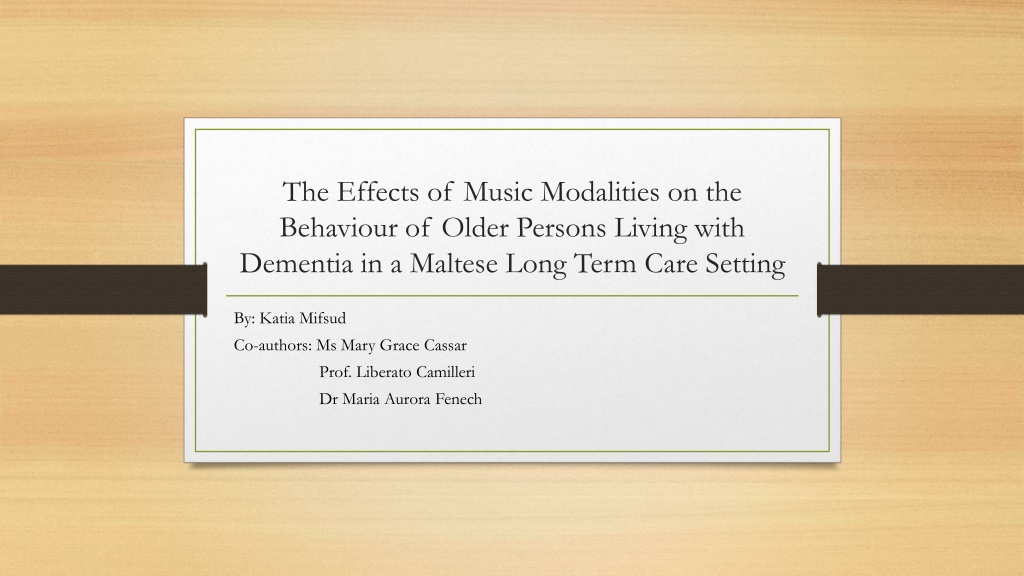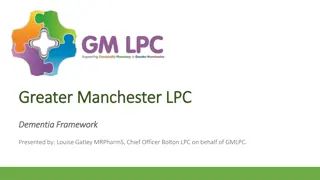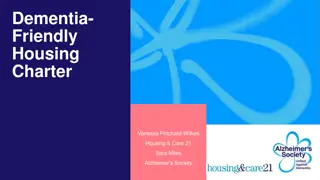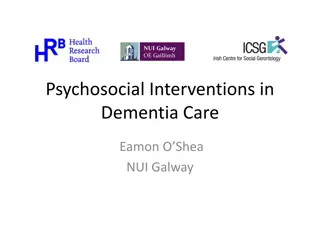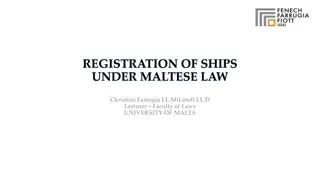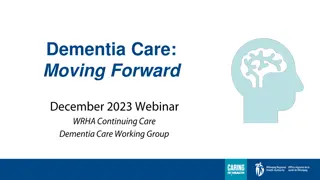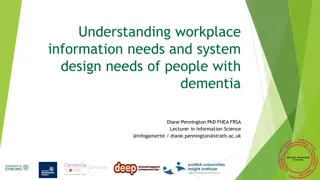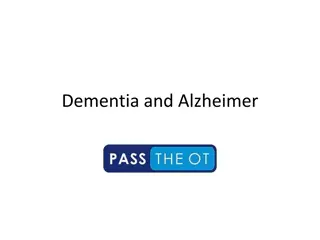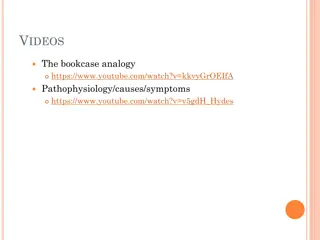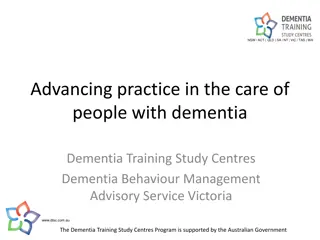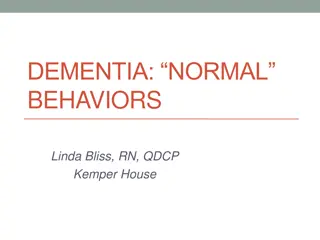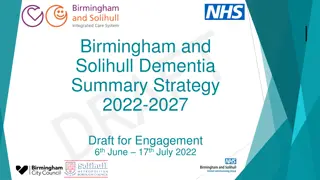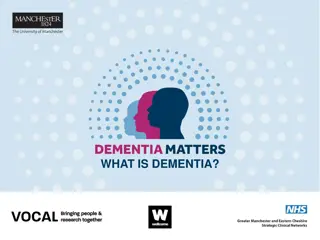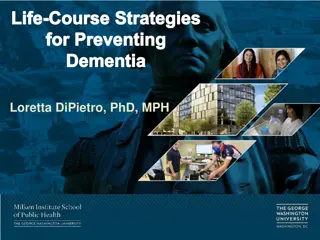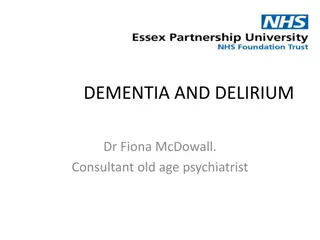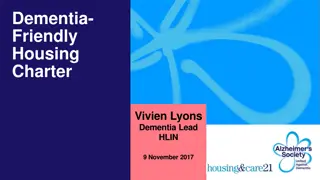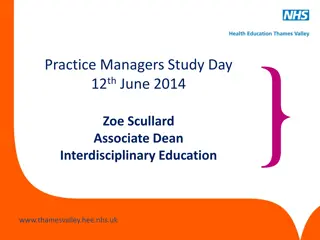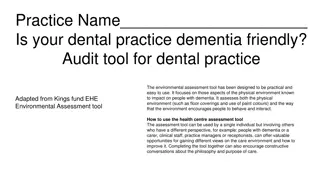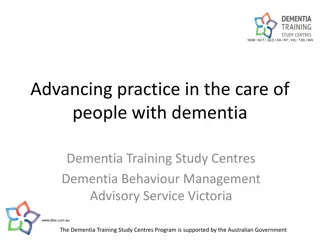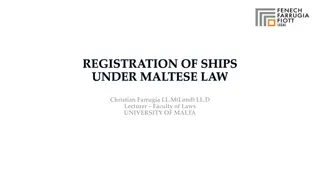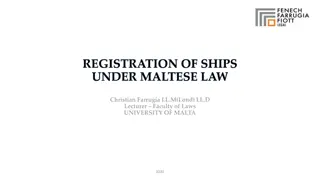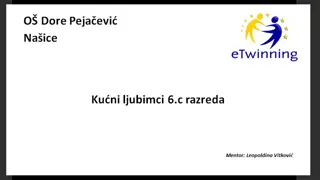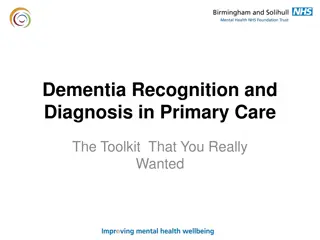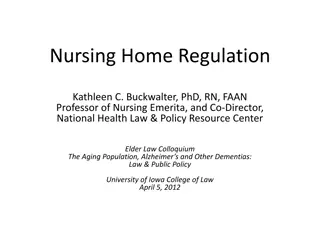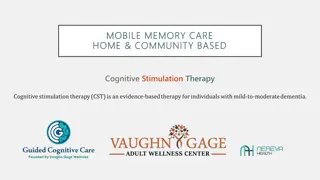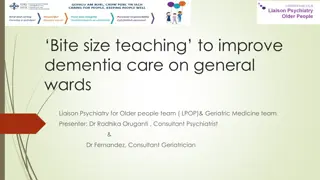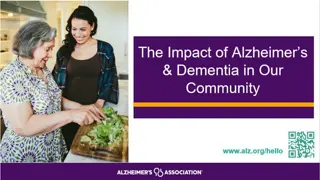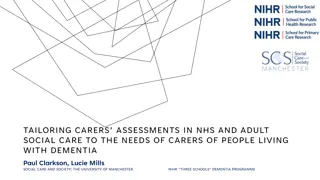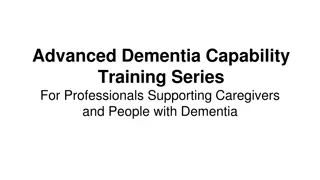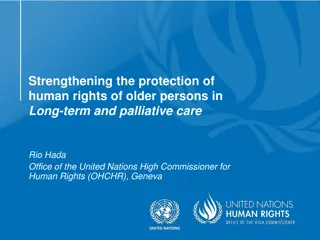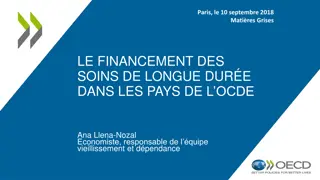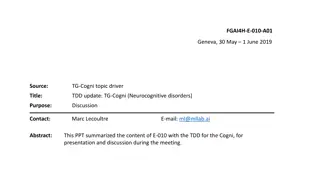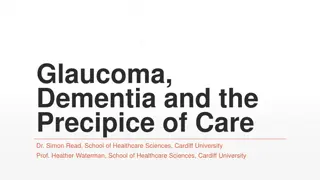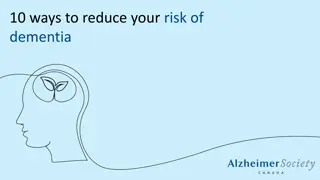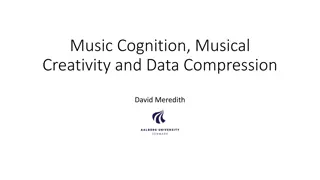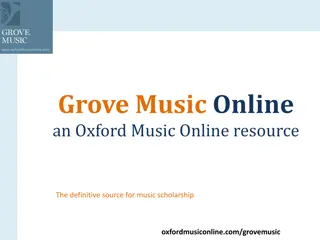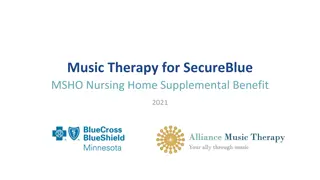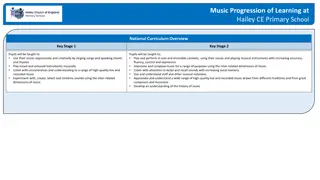Exploring Music Modalities for Dementia Care in Maltese Long-Term Settings
This study investigates the impact of music modalities on the behavior of older individuals living with dementia in a Maltese long-term care facility. Through music sessions and behavior assessments, the research aims to discover new ways to incorporate alternative therapies into dementia care, offering non-pharmacological approaches that enhance quality of life. The project's focus on challenging behavior in dementia explores the potential benefits of music interventions in improving the well-being of individuals with dementia.
Download Presentation

Please find below an Image/Link to download the presentation.
The content on the website is provided AS IS for your information and personal use only. It may not be sold, licensed, or shared on other websites without obtaining consent from the author. Download presentation by click this link. If you encounter any issues during the download, it is possible that the publisher has removed the file from their server.
E N D
Presentation Transcript
The Effects of Music Modalities on the Behaviour of Older Persons Living with Dementia in a Maltese Long Term Care Setting By: Katia Mifsud Co-authors: Ms Mary Grace Cassar Prof. Liberato Camilleri Dr Maria Aurora Fenech
Challenging Behaviour in Dementia BPSD- Behavioural and psychological symptoms of dementia Frequent occurrence of agitation/aggression Present major management challenge Present pharmacological treatments (atypical antipsychotics) - short term Serious adverse outcome of treatment (stroke/death) Consideration of possible nonpharmacological approaches Aim at having alternative therapies of intervention as first line management strategy for challenging behaviour (Alldred, 2007). - - - - - - -
Why Music? -Innate natural rhythm/beats -Pythagoras prescribed it for maladies - Seat of long-term music memory not damaged as other parts (neuron loss, brain metabolism, amyloid deposition) - Music response correlation (reward/emotion in brain) - noninvasive/cost-effective (Jacobson, 2015)
The Research Project Project site: Zammit Clapp Hospital Recruitment: -13 participants through Gatekeeper - Rudas Scale (1-15) (criterion sampling) Music Sessions: Data Collection- 8 weeks, at 2 week intervals. 3 sessions weekly (30/40mnts) - CMAI- short (behaviour assessment) (Cohen Mansfield, 1986) AIMS: - Explore effects of music on challenging behaviour Add research findings to this untapped area of study. New ways of incorporating alternative therapies in health care strategies for dementia care - - - -
Research Benefits New Care strategies in dementia care Prevailing increase in: - Life Expectancy - Dementia Cases - Preserve dignity and quality of life through music interaction as a pleasurable experience - Alternative non-pharmaceutical route - -
3 categories, as grouped by the author (Cohen Mansfield, 1986): - i) Aggressive behaviour - Hitting, kicking, pushing, scratching, tearing things, cursing or verbal aggression, grabbing (biting, spitting). ii) Physically nonaggressive behaviour - Pacing, inappropriate robing or disrobing, trying to get to a different place, handling things inappropriately, general restlessness, repetitious mannerisms. iii) Verbally agitated behaviour - Complaining, constant requests for attention, negativism, repetitious sentences or questions, screaming.
Assessments and Music Interventions a) Baseline - Assessment 1- no intervention - 2 weeks before 1st Intervention b) 1st Intervention - No assessment - Week 1 of music intervention (sessions 1-3) c) 2nd Intervention - Assessment 2 - Week 2 of music intervention (sessions 4-6) d) 3rd Intervention - No Assessment - Week 3 of music intervention (sessions 7-9) e) 4th Intervention - Assessment 3 - Week 4 of music intervention (sessions 10-12) f) Retest Intervention - Assessment 4 - Week 6 (session 13)
Results- Quantitative Aggressive Behaviour
Emerging Themes Physical Markers Increased Fulfillment and Wellbeing Reminiscence Main Themes in the Effects of Music on Behaviour MAIN THEMES Meaningful Engagement Consolidation Of The Self Enhanced Social Interaction
Sub- themes Physical Markers This main theme was further subdivided into 3 sub-themes as follows: (i) Body Movement (ii) Bruxism/ Grinding of the teeth (iii) Wandering Meaningful Engagement was further subdivided into the following 2 sub-themes to better explore the phenomena: (i) Relational Interaction (ii) Communication
The Music Medium Model
I have seen deeply demented patients weep or shiver as they listen to music they have never heard before, and I think they can experience the entire range of feelings the rest of us can, and that dementia, at least at these times, is no bar to emotional depth. Once one has seen such responses, one knows that there is still a self to be called upon, even if music, and only music, can do the calling. OLIVER SACKS (2007) Musicophilia: Tales of Music and the Brain New York: Knopf (p.346)
